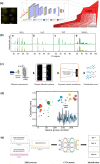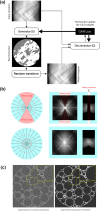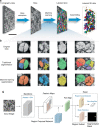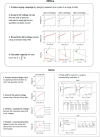Artificial Intelligence Applied to Battery Research: Hype or Reality?
- PMID: 34529918
- PMCID: PMC9227745
- DOI: 10.1021/acs.chemrev.1c00108
Artificial Intelligence Applied to Battery Research: Hype or Reality?
Abstract
This is a critical review of artificial intelligence/machine learning (AI/ML) methods applied to battery research. It aims at providing a comprehensive, authoritative, and critical, yet easily understandable, review of general interest to the battery community. It addresses the concepts, approaches, tools, outcomes, and challenges of using AI/ML as an accelerator for the design and optimization of the next generation of batteries─a current hot topic. It intends to create both accessibility of these tools to the chemistry and electrochemical energy sciences communities and completeness in terms of the different battery R&D aspects covered.
Conflict of interest statement
The authors declare no competing financial interest.
Figures






















































References
-
- https://www.ipcc.ch/sr15/ (accessed November 2020).
-
- Liu Z.; Ciais P.; Deng Z.; Lei R.; Davis S. J.; Feng S.; Zheng B.; Cui D.; Dou X.; Zhu B.; Guo R.; Ke P.; Sun T.; Lu C.; He P.; Wang Y.; Yue X.; Wang Y.; Lei Y.; Zhou H.; Cai Z.; Wu Y.; Guo R.; Han T.; Xue J.; Boucher O.; Boucher E.; Chevallier F.; Tanaka K.; Wei Y.; Zhong H.; Kang C.; Zhang N.; Chen B.; Xi F.; Liu M.; Bréon F. M.; Lu Y.; Zhang Q.; Guan D.; Gong P.; Kammen D. M.; He K.; Schellnhuber H. J. Near-Real-Time Monitoring of Global CO2 Emissions Reveals the Effects of the COVID-19 Pandemic. Nat. Commun. 2020, 11, 5172.10.1038/s41467-020-18922-7. - DOI - PMC - PubMed
-
- https://www.iea.org/data-and-statistics/charts/global-energy-related-co2... (accessed May 2021).
-
- https://www.iea.org/reports/global-ev-outlook-2021 (accessed May 2021).
Publication types
MeSH terms
LinkOut - more resources
Full Text Sources
Other Literature Sources

